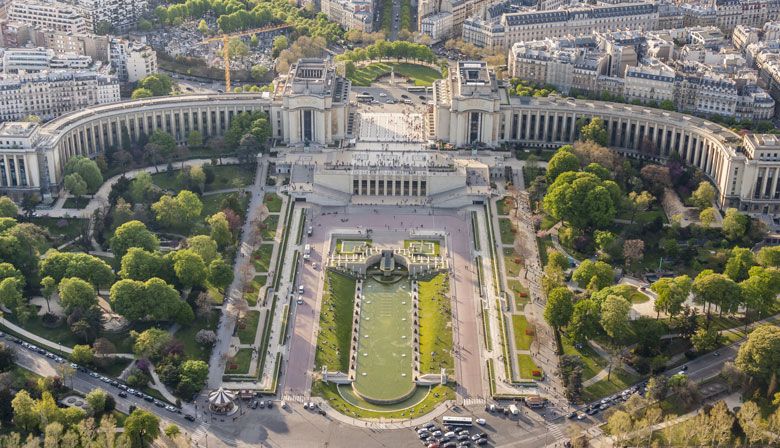Eiffel Tower History
The Eiffel tower history represents a part of national heritage. It's as been the symbol of France and Paris for decades. But when Gustave Eiffel achived its construction in 1889, the tower was only meant to be temporary in the Parisian landscape and was far from being the parisians' favourite landmark. Discover the evolution and the history of the Paris Eiffel Tower.
Eiffel Tower history : the beginning
The most popular tourist place in Paris has stretched to the Parisian skies for 127 years. Although now symbolic of France, it wasn’t meant to last. Without a doubt, the turning point in the Eiffel Tower history took place at the 1889 Universal Exposition. In commemoration of the 100th anniversary of the French Revolution, a competition was organized with the aim to “build on the Champ-de-Mars an iron tower with a square base, 125 meters wide and 300 meters high.” Out of the 107 proposals submitted, Gustave Eiffel’s was chosen. By his side were engineers Maurice Koechlin and Emile Nouguier as well as architect Stephen Sauvestre.
The Iron Lady facing skepticism
The Eiffel Tower history was not an easy one. At the time, many were against the building and voiced their concern in a letter entitled "Artists Against Mr. Eiffel’s Tower", stating the tower to be a threat against the aesthetic nature of Paris. An iron tower erected smack in the heart of Paris was considered unacceptable, a stark contrast to the elegance and refined beauty of the city. For example, Verlaine nicknamed the Eiffel Tower the “Skeleton of Beffroi” to demonstrate the giant tower’s ungainly appearance that was bound to “disfigure” the city.

The history of the construction of the Eiffel Tower (1887- 1889)
Despite all the uproar, the frail iron tower would nonetheless see the day. To understand the history of the Eiffel Tower, it is important to know that its construction followed different steps. The construction itself lasted two years.
- June 1884 : The project began and the first drawings were done.
- January 28th, 1887 : The works begin.
- April 1st, 1888 : The first stage was completed.
- August 14th, 1888 : The second stage was completed.
- March 31st, 1889 : The third and final stage in which the tower was completed in its entirety ended.
- The Eiffel Tower was inaugurated on March 31, 1889. Gustave Eiffel walked the 1,710 steps to the top of the Tower to place the tricolored French flag at its summit. At the time, the Tower was 312 meters high.
To know more details about the Eiffel Tower history of the construction, click here.
Story of a temporary building turned into a French symbol
When the project came to being, it had been established that the licensing rights linked to the convention for the tower’s construction would last only 20 years, followed by imminent destruction. However, two million people visited the Tower during the Universal Exposition. Following this incredible success, the building became a symbol of French industrial power. The Tower was as equally as successful during the 1900 Universal Exposition. Determined to avoid the Tower’s destruction, Gustave Eiffel went to great lengths to prove its scientific utility. Scientific experiments were conducted in the fields of astronomy and physiology but what would really save the Tower in the end was its use as a radio antenna tower, first for military communications and then for permanent, radiotelegraphy communications; in fact, the Tower served many a purpose during the First World War. The Eiffel Tower is part of the French History.
Book your Eiffel Tower tickets online with PARISCityVISION to know more about the Eiffel Tower History.
The success story of the Eiffel Tower
Every year approximately 7 million visitors climb the Tower. Its success is such that many countries all over the world have replicated the Tower more or less identically to the original one. Can you really imagine Paris without the Eiffel Tower? During your stay in Paris, don't miss the Eiffel Tower light shows that have been delighting the tourists and Parisians since the end of the XIXth century.


